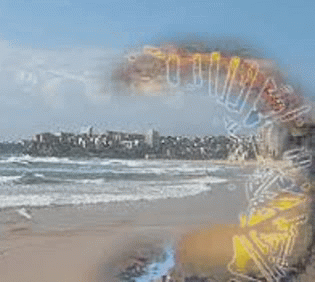

In addition to typical visual and sensory aura symptoms, people with hemiplegic migraine can have: They can also be an inherited genetic condition (meaning this type of migraine runs in the family). Hemiplegic migraines can sometimes occur in people with no family history of migraine. Paralysis on one side of the body is called hemiplegia. This is a rare type of migraine where people have noticeable weakness or paralysis on one side of the body. In addition to typical visual and sensory aura symptoms, people with migraine with brainstem aura can also have: This is because their migraine involves the brainstem (the base of the brain). People with this condition have unique aura symptoms. Migraine with brainstem aura (basilar migraine) These are all unique types of migraines and are different from the migraine with typical aura described above. There are three other types of migraine with aura. This pattern changes the blood flow and chemical activity in your brain, which may lead to migraine aura and other symptoms. Scientists believe the cause may be cortical spreading depression, a wave-like pattern of electricity in your brain. We don’t know for sure what causes migraine auras. Your symptoms include visual hallucinations (seeing things that aren’t there). You have symptoms on only one side of the body.

You have a headache during or after the aura phase. You have two or more symptoms back to back.Įach symptom lasts between 5 and 60 minutes. You have at least one symptom that spreads gradually over 5 or more minutes. During aura, at least three of the following will be true: But, fortunately, aura symptoms tend to follow certain patterns. If you’ve never had them before, these symptoms can be scary. But pain and aura can also happen at the same time, and aura can even occur with no headache pain at all.Īura symptoms usually last less than 60 minutes In many cases - but not always - a headache will follow. The symptoms usually go completely away within an hour. Symptoms usually take about 5 to 30 minutes to start and spread. Tingling (pins and needles) in your arms, legs, or face Seeing shimmering spots or geometrical shapes In fact, 99% of people with aura will have visual symptoms at some point. Migraine aura symptomsĪ typical migraine aura usually has at least one or more symptoms. And it’s even possible to have migraine aura but never have headache pain.Ībout 30% of people with migraines have auras. But aura can also happen at other times during a migraine attack. Migraine auras are visual and physical symptoms that can occur with a migraine attack - like seeing lights or feeling a tingling sensation in your body.įor many people, migraine aura is a sign that headache pain is on the way. This pattern includes:Ī history of at least five migraine attacks, each lasting 4 to 72 hours (when untreated) People with migraines usually share a specific pattern to their headaches. It is often located on one side of the head. A migraine is a type of recurring painful headache.


 0 kommentar(er)
0 kommentar(er)
